Terraria bait is a collection of materials that are required for fishing. When a fishing pole is launched, the player must have at least one bait item in their inventory; otherwise, nothing will be caught. Without bait, fishing poles will cast their lines, but there will be no “bites” or catches.
When the player reels in the line with a catch on the hook, the bait item is devoured. It is not spent when the player casts the line or when the line is hauled in without catching anything.
Even if the player manages to catch a fish, the bait has a slim probability of being devoured. Bait and ammunition have certain characteristics: All bait items may be stored in the inventory’s ammo slots. Next to fishing poles on the hotbar, the quantity of available bait items will be indicated. If the player has more than one bait item in their inventory, they are utilised in order from top left to bottom right.
As a result, the bait item on the top/left will be used first. Because the critters created by statues can’t be caught with a Bug Net, statues don’t help with bait gathering. When you wear Flower Boots, the likelihood of a creature spawning after harming flowers or grass is greatly reduced.
In Terraria, there are a number of fishing possibilities, and you can obtain a lot of helpful things by using this feature. Although fishing isn’t required for constructing or surviving in Terraria, it’s nonetheless fun to do from time to time since it brings a sense of calm to an otherwise hectic game.
Fishing may be a good technique to get bait on its own: Angler Bait gained from the crates is typically more than what was used, and Master Bait with its 50% bait power (and hence durability) will quickly replace any other sort of bait when utilising Crate and Sonar Potions and denying common catches like Bass.
In the Forest, Jungle, or Hallow biomes, though, catching bait critters is rather simple. The choices vary depending on the biome and the time of day.
Bait spawn rates
Critter spawn rates and caps are influenced by many of the same criteria as hostile enemy spawn rates and caps, therefore Water Candles, Peace Candles, Battle Potions, Calming Potions, and Sunflowers will have an impact on critter spawning. As a result, it is recommended that when farming creatures, you use a Battle Potion and either hold or set a Water Candle nearby.
Nearby NPCs increase the quantity of critters relative to foes in all instances. They can even entirely suppress opponent spawning if there are enough nearby, resulting in critters being the only creatures that can spawn.
Even when there are a lot of NPCs nearby, foes might still spawn in the Underworld or in Expert Mode.
While removing background items on the surface, worms, grasshoppers, and jungle baits (Buggy, Grubby, and Sluggy) can be found (see table below). There will be no more bait critters spawned after the number of bait animals on the map reaches its maximum. The overall maximum limit for the three varieties of Jungle baits is 8.
Critters are the most prevalent type of bait. Insects, snails, and worms (save the truffle worm) all require the use of a bug nett or golden bug nett to be collected. There are 42 distinct types of animals now available, however only the 23 bug, snail, and worm versions can be used as bait.
You may capture them in specified areas during specific times of the day when they are able to naturally spawn. The following is a list of the creatures used as bait (along with their bait power).
- Black Scorpion – 15%
- Buggy – 40%
- Julia Butterfly – 25%
- Monarch Butterfly – 5%
- Purple Emperor Butterfly – 35%
- Red Admiral Butterfly – 30%
- Sulphur Butterfly – 10%
- Tree Nymph Butterfly – 50%
- Ulysses Butterfly – 20%
- Zebra Swallowtail Butterfly – 15%
- Enchanted Nightcrawler – 35%
- Firefly – 20%
- Glowing Snail – 15%
- Gold Butterfly – 50%
- Gold Grasshopper – 50%
- Gold Worm – 50%
- Grasshopper – 10%
- Grubby – 15%
- Lightning Bug – 35%
- Scorpion – 10%
- Sluggy – 25%
- Snail – 10%
- Worm – 25%
It’s worth noting that creatures created by statues can’t be collected and utilised as bait with a bug nett. When you try to catch them, they will despawn.
Only bait items that have been pulled in with a catch on the hook can be ingested. There’s also a potential that certain bait won’t be devoured after it’s been caught. Any bait having a bait power of more than 5% will be eaten in repeated captures.
If you have multiple types of bait, the one closest to the top left-hand corner of your inventory will be used first. They can also be stored in ammo bags, however they will be utilised after any remaining bait in your inventory slots.
Jellyfish that are blue, green, or pink are distinct from hostile jellyfish and may only be captured by fishing. Only subterranean or cavern sources of water can be used to catch blue jellyfish. Green jellyfish may be found in the same regions as blue jellyfish, although they are only found in Hardcore.
When Hardcore is active, catching a jellyfish in these places has a 50 percent chance of becoming blue or green. Pink jellyfish may be found in a variety of ocean biomes. Each of the three has a 20% bait power. With 50 percent fishing power, the likelihood of catching a jellyfish bait item is 1 in 500, and with 100 percent fishing power, it’s 1 in 250.
Terraria Bait power
Bait power affects the quality of the catch (see Fishing for more information and other aspects), as well as the likelihood of the bait item being devoured after a successful capture: Higher bait abilities indicate a reduced likelihood of the bait item being consumed.
The following formula is used to assess the likelihood of the bait being consumed: Chance to consume = 1/1+ baitpower / 6. You can have an even stronger effect by using the Tacklebox, angler tackle bag or a lavaproof tackle bag. The formula for these is: 1 over 2 + bait power /6. Make sure you calculate your bait power in the formula by multiplying your items listed bait power by 100. The tackle box and any upgrades for it are not as useful for items that have high bait power.
Terraria Bait types
There are numerous objects that may be used as bait, and depending on the type, they must be gathered in different ways:
- While Ladybugs can be utilised as bait, doing so will result in the player receiving Bad Luck. Given how luck plays a role in fishing, this is a bad idea.
- Invertebrates (insects, scorpions, snails, and worms) can be used as bait, but they must be captured with the Bug Net, Lavaproof Bug Net, or Golden Bug Net.
- The Truffle Worm is one of a kind in that it can only summon Duke Fishron. It’s not suitable for regular fishing.
- Only a Lavaproof Bug Net or Golden Bug Net can catch the Magma Snail, Hell Butterfly, or Lavafly. They have the unique ability to allow the player to fish in lava when used as bait.
- The Jellyfish bait items in blue, green, and pink are unrelated to the Jellyfish foes. They are captured in the act of fishing.
- Apprentice Bait, Journeyman Bait, and Master Bait are obtained from boxes and as prizes for completing missions for the Angler NPC.
Farming Fireflies
Flower Boots are a great way to raise bait. They function on all varieties of grass, including normal, Jungle, and Hallowed, that include plants that are ideal for producing animals. Standing in one place while wearing the Flower Boots and continually destroying the flowers beneath the player is a highly efficient approach. It’s also effective to fire a Flare towards the player’s feet.
In both circumstances, the boots encourage the growth of new ones. Flower Boots may be used to farm bait by sprinting through a patch of grass with them on, then removing the boots and killing the flowers. This is a little sluggish, but it’s the only method to make bait on demand without having to rely on natural creature spawning.
Fireflies are nocturnal and spawn at night. In the Forest environment, they like to gather near NPC dwellings and spawn in big numbers. They are replaced in The Hallow by the better Lightning BugLightning Bugs. Their 20% bait power isn’t much, but it’s plenty for early fishing, and they’re rather frequent. At the start of each night, the spawn rate of Fireflies is set at random.
As a result, large swarms will spawn on certain nights while only a few will spawn on others. At the new moon, they spawn in very large numbers.
While fireflies do not spawn in the rain, the rate of worm spawning increases dramatically. The spawn rate of Fireflies may be boosted by erecting a platform in the sky high enough to obscure the ground. More Fireflies will spawn since terrestrial creatures have nowhere to spawn on.
Keep in mind that surrounding NPC households can assist you. Wings will significantly speed up the process of capturing Fireflies. In the absence of such, a network of interconnected platforms will suffice.
Certain bugs are more likely to spawn in towns with NPC characters, and fireflies are one of the greatest bugs to collect with this strategy. To develop a town, you’ll need to construct a few structures and then recruit NPCs to dwell in your freshly constructed homes. Fireflies spawn all over the surface, but they don’t spawn inside buildings, so you’ll have to venture outdoors at night to collect them.
To collect firefly, you’ll need a bug nett, much like other insects. Fireflies may be used for fishing, and creating a town is a fantastic way to cultivate them, even if they aren’t very frequent. You’ll have no trouble recognising fireflies since they emit light.
Lightning bugs and worms are simple to come by; I get around 20-40 lightning bugs every night, and if you make a new world, explore all surface tunnels and crush all the rocks, you’ll get worms often; some of them may hold up to three.
Farming Worms
| Short Grass | Long Grass | Dirt piles | Spawn limit |
| 0.25% chance per tile | 0.5% chance per tile | 16.67% chance per tile | 5 |
When it rains, worms hatch in the Forest. Walking about NPCs on a wet day might result in a lot of Worms. Worms will only breed when rain falls on grass, so keep an eye out for overhanging structures. Worms are incapable of scaling even a single-block “cliff.”
Because standard laid blocks are square, they provide an ideal trap for them. Several dozen may be caught in a single wet day by simply gathering them in a hole at the end of a flat area. For the player to stand in and swing a Bug Net, the hole must be at least 2 tiles wide.
One of the most frequent ways to obtain bait is to look for rocks in the backdrop when travelling. Worms make excellent fishing bait, so stocking up on them is a smart idea if you intend on going on a lot of fishing trips.
You should demolish any background rocks you come across since worms may live beneath them. You won’t always catch worms after shattering a rock, but if you destroy enough of them, you will most of the time.
On the surface level of a map, you can collect worms using a bug nett, just like snails. Aside from breaking rocks, another effective approach to find snails is to stroll around the map while it’s raining, since worms are plentiful during this weather, and you can capture a lot of them if you spend enough time wandering around.
Although this isn’t the most interesting approach to gather a lot of bait, it’s incredibly effective, and you’ll never run out of worms because rainfall occurs 20% of the time in-game. A water candle may also be used to boost the spawn chance of bugs like worms, therefore utilising it while it’s raining is a wonderful method to farm.
Farming Snails & Butterflies
Because snails are one of the more uncommon forms of bait in Terraria, knowing where to look for them is essential. Snails can only be found in the subterranean layer of a Terraria map, so you’ll have to go underground if you want to catch one. Glow snails may also be found in luminous mushroom biomes.
You must journey far beneath the surface to reach the cavern layer in Terraria; this layer terminates at the Underworld. Once you’ve found snails, you may catch them with a bug nett and utilise them in crafting or as fishing bait.
In Terraria, when a new in-game day begins, the spawn rate for butterflies on that day is random. As a result, you’ll occasionally witness absolutely no butterflies in a single day, while others may see a swarm of them soaring across the area.
If you come across a large group of butterflies, it could be worth putting your present project aside to look for additional butterflies, as this might be a great opportunity to store up on this bait.
If you come across a butterfly while out travelling, capture it with a bug nett and save it for later. Butterflies may be found in woodland biomes and can be seen during the day. Hell Butterflies may be found in the Underworld.
Angler Quests
There are a lot of NPCs in Terraria, but the Angler is special since he can give you fishing tasks. When you initially meet the Angler, he’s resting on the beach in an ocean biome, and if you wake him up and there’s an empty home nearby, he’ll willingly move in and begin handing you fishing missions.
The Angler gives you fishing tasks with several objectives, the most common of which is to capture uncommon fish and deliver them to him. After finishing a quest for the Angler, you’ll be given a prise that has a slight possibility of providing you a Tackle Box, a fishing equipment that reduces the likelihood of you using bait. This isn’t going to help you with your farming.
Finally, completing missions from the Angler NPC will reward you with apprentice, journeyman, and master bait. It’s also possible to come across them when fishing and grabbing a box. Apprentice bats have 15% power, journeyman bats have 30% power, and master baits have 50% power.
Extra tips
You have a good possibility of encountering crawling insects that you may collect and use as fish bait if you destroy the background plants in a jungle terrain. You can shatter the plants with a pickaxe, and you’ll be rewarded with bugs if you’re lucky. This strategy is especially handy if your residence is in a jungle biome, while it is less useful if you have to go to a jungle.
While exploring a jungle terrain, keep an eye out for plants because there is a lot of greenery in the region. You may also cultivate these plants by planting jungle bushes in this biome, which is another reason why this is a good technique if you already live in one.
It’s important to keep in mind that when fishing, you shouldn’t use a lot of bait. For some reason, if you let a fish nibble on your bait rather than trying to catch it, the bait will not be consumed; this means you may use a Sonar Potion and just not try to catch all the Bass and anything else you don’t want. With just five worms, you may fulfil multiple tasks.
Lightning Bugs are the way to go. They don’t come up very often on some nights, but on others, swarms of ten or more appear many times during the night. They’re also fairly high, coming in at 20%. Worms, in my opinion, are more difficult to locate. I’m not going to create a new universe simply to find bait, it would be a pain in the neck.
I only use my sky bridge to cultivate grasshopers and worms in my primary planet. I can easily acquire over 50 grasshopers and 20 worms in a single run, and I can do so every couple of days in-game.
For this to operate, a skybridge composed of soil and covered with grass is necessary. It takes a long time to construct and must be totally overgrown with grass, but the finished result may be worthwhile.
Simply walk to one end of it (near the map’s edge), equip your bug nett, aim straight ahead, and begin running forwards while firing your grapling hook in front of you (it cuts the grass but does not harm the critters spawned from it), all the while swinging your bug nett to catch anything that spawns from the cut grass.
Instead of farming a lot of bait, I discovered that sonar potions were really useful. They made 10 or 15 worms last for a long time since you can easily pass the bass and other unnecessary items and keep the bait for the fish you actually want to capture. It’s also helpful to know ahead of time if the water you’ll be fishing in isn’t large enough (more grey stuff turns up).
Conclusion
Farming Terraria bait can be extremely easy if you know what you are doing. I hope you have learned the multiple ways of doing it in this article. Most people stick to traditional worm and firefly farming in the forests, but others have a more complicated approach that yields up to 70-100+ bait per run.
Also check out how to get Titanium in Terraria!


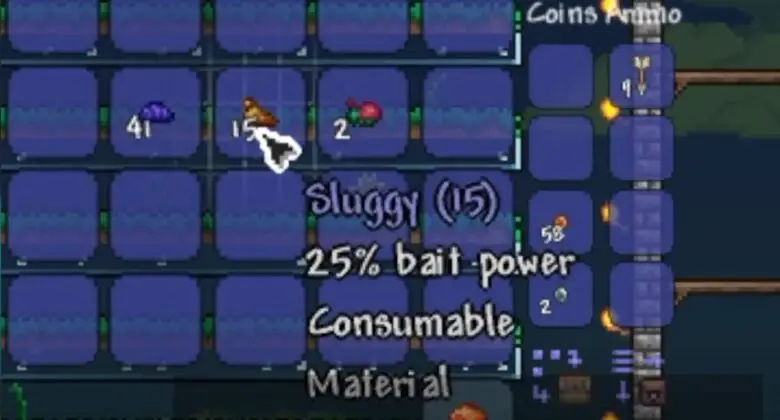

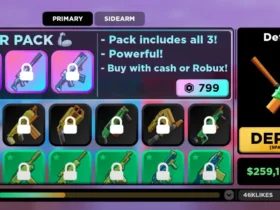

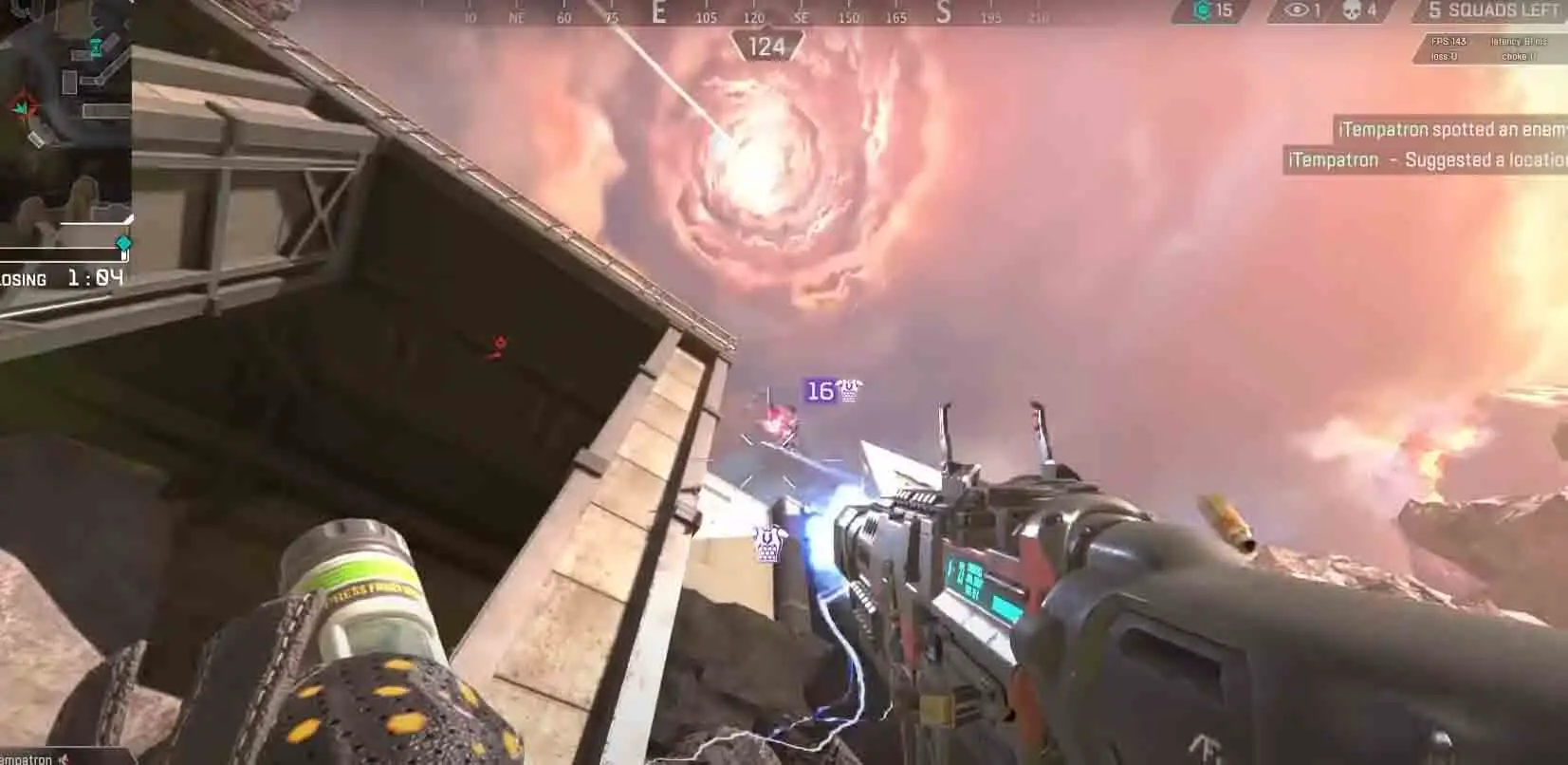

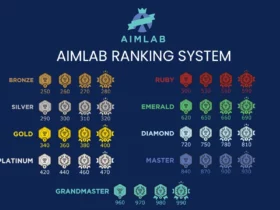
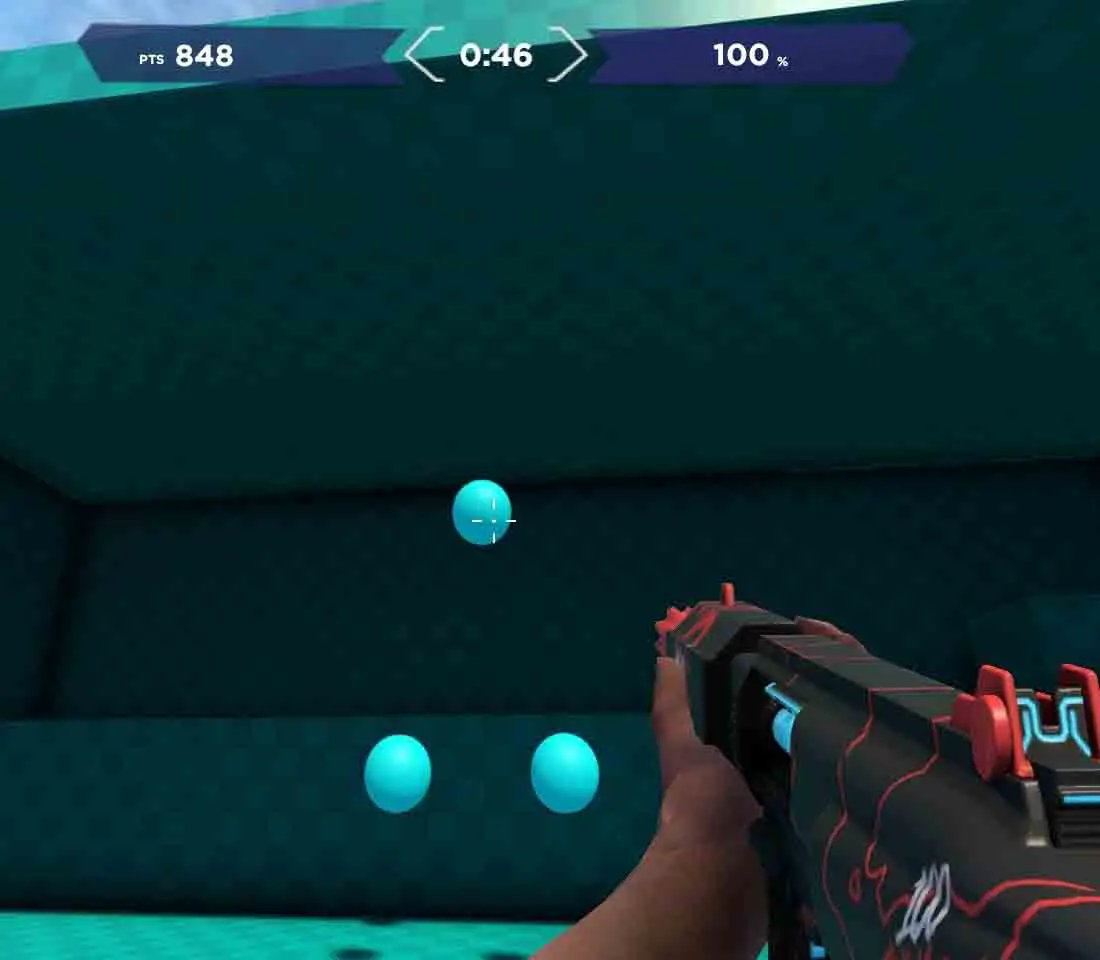
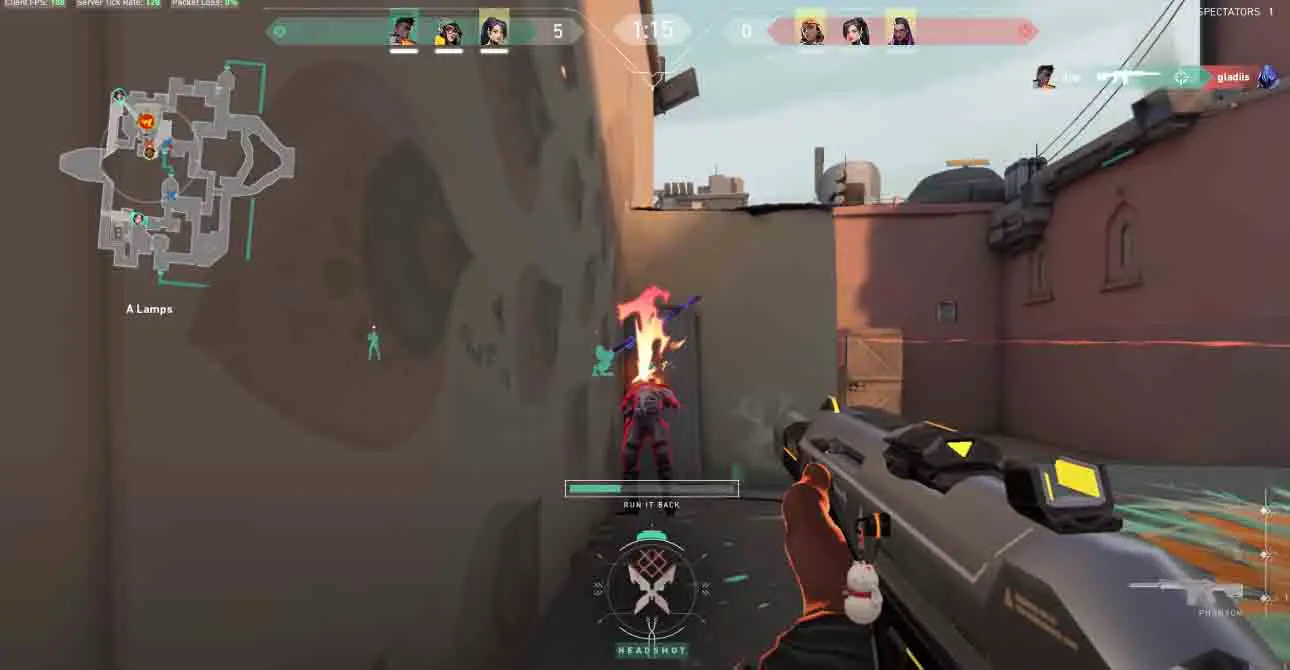


Leave a Reply